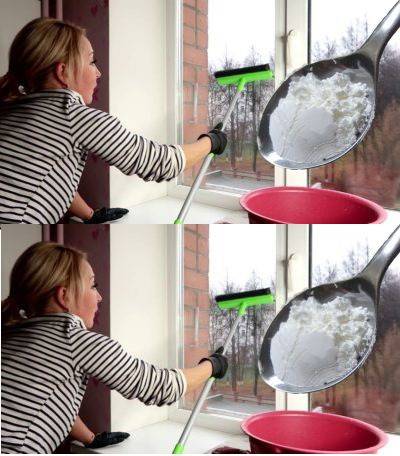Windows serve as the eyes of our homes, offering glimpses into the outside world while allowing natural light to illuminate our living spaces. However, maintaining their clarity can be a daunting task, especially when faced with stubborn streaks and smudges. While numerous commercial cleaners promise spotless results, many contain harsh chemicals that may not be ideal for all households. Enter starch—a natural, eco-friendly alternative that has been gaining attention for its effectiveness in window cleaning. This article delves into the benefits of using starch, explores various methods to incorporate it into your cleaning routine, and provides practical tips to achieve gleaming, streak-free windows.
Understanding the Role of Starch in Cleaning
Starch, commonly derived from corn or potatoes, is a carbohydrate that has found its way into various household applications beyond the kitchen. Its unique properties make it an excellent cleaning agent, particularly for glass surfaces. Here’s why:
- Mild Abrasive Qualities: Starch particles are fine enough to act as a gentle abrasive, effectively loosening dirt and grime without scratching delicate glass surfaces. Martha Stewart
- Absorption Capabilities: Starch can absorb oils and grease, which are common culprits behind streaky windows. This absorption helps in lifting away residues that water alone might not remove. Always Immaculate
- Antistatic Properties: After cleaning, starch leaves behind a thin film that can reduce static cling, thereby minimizing the rapid resettlement of dust on the glass. Always Immaculate
Methods to Clean Windows Using Starch
Incorporating starch into your window cleaning routine can be done in several ways. Below are some effective methods:
- Starch-Based Cleaning SolutionIngredients:
- 1 tablespoon of cornstarch
- 1/4 cup white vinegar
- 1/4 cup rubbing alcohol
- 2 cups warm water
- In a spray bottle, combine the cornstarch, white vinegar, rubbing alcohol, and warm water.
- Shake the bottle vigorously to ensure the cornstarch dissolves completely.
- Spray the solution onto the window surface.
- Wipe clean with a lint-free microfiber cloth or a squeegee, starting from the top and working your way down to prevent drips.
- Starch Paste for Tough StainsIngredients:
- Equal parts cornstarch and water (e.g., 2 tablespoons each)
- Mix cornstarch and water to form a thick paste.
- Apply the paste directly to areas with tough stains or hard water spots.
- Gently scrub the area using a soft cloth or sponge.
- Rinse with clean water and dry with a microfiber cloth.
- Starch and Vinegar SprayIngredients:
- 1 tablespoon cornstarch
- 1/4 cup white vinegar
- 2 cups warm water
- Dissolve the cornstarch in warm water.
- Add the white vinegar and mix thoroughly.
- Pour the mixture into a spray bottle.
- Spray onto the window and wipe clean with a lint-free cloth.
Practical Tips for Optimal Results
- Shake Well Before Use: Starch tends to settle at the bottom of the solution. Always shake your spray bottle well before each use to ensure even distribution. Holly Hammersmith
- Use Lint-Free Materials: Employ microfiber cloths or newspapers to wipe the windows, as they are less likely to leave lint or streaks.
- Avoid Direct Sunlight: Clean windows during cooler parts of the day. Direct sunlight can cause the cleaning solution to dry too quickly, leading to streaks.
- Regular Maintenance: Incorporate starch-based cleaning into your regular cleaning schedule to maintain clarity and prevent the buildup of grime.
Environmental and Health Benefits
Opting for starch as a cleaning agent offers several advantages:
- Non-Toxic: Starch is a natural substance, making it safe for households with children and pets.
- Eco-Friendly: Unlike some commercial cleaners that contain harmful chemicals, starch is biodegradable and environmentally friendly.
- Cost-Effective: Starch is an inexpensive alternative to specialized window cleaning products, providing effective results without breaking the bank.
Conclusion
Achieving spotless, streak-free windows doesn’t necessitate the use of harsh chemicals or expensive commercial products. Starch, a humble pantry staple, offers a natural and effective solution for window cleaning. Its mild abrasive and absorbent properties make it adept at removing dirt, grime, and grease, leaving your windows gleaming with minimal effort. By incorporating starch-based methods into your cleaning routine, you not only enhance the clarity and appearance of your windows but also contribute to a healthier home environment. Embrace this eco-friendly approach and let your windows shine with the surprising power of starch.

